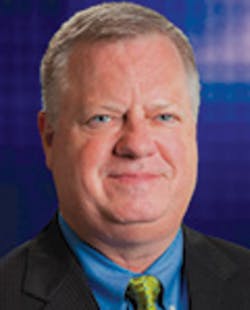When President George W. Bush proposed a plan for most Americans to have access to electronic health records (EHRs) by 2015, he was attempting to initiate his own brand of healthcare industry reform, a policy measure of his immediate predecessor Bill Clinton.
“By computerizing health records, we can avoid dangerous medical mistakes, reduce costs and improve care,” Bush told Congress and the nation during his State of the Union address in late January 2004.
Bush’s challenge to automate health records wasn’t limited simply to converting paper files to computer files. His aim, which seemed to parallel the healthcare industry’s intention, was to encourage the capability of safe and secure access to healthcare data by appropriate and relevant individuals and institutions.
As providers and the government studied the challenges and opportunities of EHR capabilities, software suppliers developed products and services to meet the demands for required “meaningful use.”
Since the emergence of case studies, pilot programs, presentations, seminars and exhaustive media reports examining the positives, negatives and ongoing challenges spurred by EHR implementation, universal acceptance remains a goal.
Clinicians and providers may understand the promise of EHRs, but they struggle over the premise and process changes along the way. In fact, one doctor expressed his dissatisfaction with EHR implementation in a Wall Street Journal editorial in mid-February 2015. The Phoenix-area general surgeon called EHR use “more than a mere nuisance; it is an impediment to providing personal medical attention.”
Jeffrey Singer, M.D., cited a 2014 Medical Economics survey that found 67 percent of physicians are dissatisfied with EHR functionality, and a Deloitte survey that reported “three of four physicians think electronic health records ‘increase costs.’” He attributed cost increase claims to a November 2014 report by the Agency for Healthcare Research and Quality (AHRQ), which posited that “the average five-physician primary-care practice would spend $162,000 to implement the system, followed by $85,000 in first-year maintenance costs.”
Anecdotally, Singer further noted that doctors populating EHRs with data means they would see fewer patients, which would lead to higher costs per patient for service.
Yet Singer is not alone in voicing concerns about interoperability (integration and interfacing with existing systems) and workflow impact.
Even the American Medical Association (AMA) weighed in, citing its study with RAND Corp. that posited “EHR systems that have neglected usability as a necessary feature.” In fact, the AMA called for the government and industry to improve the Meaningful Use program, EHR certification system, and EHR usability and interoperability without condemning the idea of EHRs.
“While AMA/RAND findings show physicians generally expressed no desire to return to paper record keeping, physicians are justly concerned that cumbersome EHR technology requires too much time-consuming data entry, leaving less time for patients,” the AMA stated last September. “Numerous other studies support these findings, including a recent survey by International Data Corporation that found 58 percent of ambulatory physicians were not satisfied with their EHR technology, ‘most office-based providers find themselves at lower productivity levels than before the implementation of their EHR’ and that ‘workflow, usability, productivity and vendor quality issues continue to drive dissatisfaction.’”
Steven Stack, M.D., AMA President-elect at the time, stated, “Physician experiences documented by the AMA and RAND demonstrate that most electronic health record systems fail to support efficient and effective clinical work. This has resulted in physicians feeling increasingly demoralized by technology that interferes with their ability to provide first-rate medical care to their patients.
“Now is the time to recognize that requiring electronic health records to be all things to all people – regulators, payers, auditors and lawyers – diminishes the ability of the technology to perform the most critical function: helping physicians care for their patients,” Stack continued.
Regardless of usability issues, physicians are mandated to use certified EHR technology to participate in the federal government’s EHR incentive programs, according to the AMA. But the organization wasn’t placing blame squarely on software suppliers: “The AMA recognizes that not all EHR usability issues are directly related to software design itself. Some issues are a result of institutional policies, regulations and sub-optimal implementation and training.”
Roughly five months later, the AMA expressed alarm that more than 75 percent of eligible professionals still have been unable to attest to Meaningful Use.
“The program’s one-size-fits-all approach, that has not been proven to improve quality, has made it difficult for physicians to take part,” the AMA stated in mid-February 2015. “The penalties physicians are facing as a result of the Meaningful Use program undermine the program’s goals and take valuable resources away from physician practices that could be spent investing in better and additional technologies and moving to alternative models of care that could improve quality and lower costs.
“They additionally make it harder for physicians to meet Meaningful Use in the future,” the AMA continued. “In order to successfully attest, physicians must spend tens of thousands of dollars for tech support, software upgrades, interfaces and data exchange, often on a recurring basis.”
Looking back at EHR development and progress during the last decade, Health Management Technology asked a variety of industry experts and observers to reflect on the noteworthy high and low points along the way.
High point No. 1: Federal government push
Rather than enable the healthcare industry to languish and spin its wheels in seemingly endless debate and discussion about what to do, the federal government spurred progress with legislative language that included incentivized milestone adoption and implementation deadlines.
Greenway Health
“A number of years ago, I moved from being a full-time practicing physician to a clinical informaticist as Greenway Health’s CMO because I strongly believe in the power of EHRs to transform healthcare delivery and outcomes,” James Ingram, M.D., FACS, Chief Medical Officer, Greenway Health, told HMT. “An exciting high point of the last decade to me was the federal government’s recognition of that value to clinicians, patients and payers alike. Legislation such as the ARRA [American Recovery and Reinvestment Act of 2009] and the HITECH Act provided a significant stamp of approval – including putting some incentive money behind it to make it happen – that has advanced EHR adoption in this country. It’s enabled the U.S., frankly, to catch up with some other industrialized countries that have already embraced EHRs more broadly.”
Becky Quammen, CEO, Quammen Health Care Consultants, agreed that the government requirement of ARRA and HITECH for certified records with meaningful use lit the fuse.
“While we all debate the efficacy of these two requirements, there is no debate that this regulation was the single greatest catalyst for transformational change in healthcare,” Quammen said. “Healthcare industry technology adoption rates were shockingly small in the years that followed the [Institute of Medicine] report regarding patient safety and medical errors, among other issues.”
The ARRA “pushed many health systems to move forward with EHR implementations and increased the penetration of digital capabilities across the healthcare industry,” insisted Randy Carpenter, LCHIME, FCHIME, FHIMSS, Senior Vice President of Strategic Services, Stoltenberg Consulting.
Indeed, the government’s recognition of the need and resulting push to create incentives for EHR adoption was a high point, according to Manu Varma, Vice President, Strategy, Philips Hospital-to-Home. “These incentives super-charged the EHR adoption curve,” he asserted.
Varma also praised the creation of the Office of the National Coordinator for Health Information Technology (ONC) because, “it played a large part in helping to digitize the healthcare sector,” he said.
High point No. 2: Industry wake-up call
Federal government attention elicited positive and negative responses by healthcare providers and suppliers, sources said.
“The healthcare industry, even though it required a massive government program to catalyze it, finally realized [that] continuing to use paper records in an industry representing 17 percent of our GDP was unsustainable,” said Joe Condurso, President and CEO, PatientSafe Solutions.
Amid a rapid increase in technology advancements, the industry saw an “accelerated adoption of EHRs” that has led to “improvements in patient safety, quality and operational effectiveness, according to Greg White, Senior Vice President and General Manager, TouchWorks business unit at Allscripts. “The immense amount of change EHRs have gone through is leading to better patient outcomes. While change is never easy, and clinicians have endured a greater amount of change than most, we are now realizing the benefits,” White said.
Joel French, CEO, SCI Solutions, saluted successful EHR implementations to date.
“EHRs have been good at doing what they were designed to do: increase legibility and comprehensiveness of patient records and improve real-time, cross-organization access to patient information,” French said. “Many organizations have been able to deliver safer care as a result. Reducing costs requires reducing practice pattern variation. This cannot be done in an analog environment, so the shift to digitized record keeping and transaction processing is foundational to the future reengineering of care delivery processes [that] tomorrow’s emerging care and finance models will require.”
High point No. 3: Data collection
The push for electronic records also accelerated the volume of data collected, albeit with mixed results.
“During the last decade, the rapid adoption of smart mobile devices among clinicians and patients has also provided the opportunity to harness the massive amount of EHR data and actually deliver a return on the hospital’s investment,” said PatientSafe’s Condurso. “A smart mobile EHR overlay can provide contextual clinical data and communication tools that are synchronous with the clinicians’ workflow and improve both efficiency and patient-centered connected care. By bridging the gap from the EHR to where patient care is actually delivered, hospitals can shift the focus to the bedside and the moment of truth between the clinician and the patient.”
In fact, as healthcare organizations implement basic functionality on a daily basis, “they now face the challenge of effectively mining and understanding the vast amount of data being captured by these systems,” Stoltenberg’s Carpenter said. “Analytics is and will be a major focus for the next few years as organizations work to make their data into actionable information.”
Mary Kate Foley, Vice President, User Experience, athenahealth, cited the emergence of cloud-based technology as making “health IT infrastructure accessible, affordable, scalable and, most important, nimble and responsive to industry change.” For example, Foley noted how her company was able to “universally update” its EHR product to include Centers for Disease Control and Prevention (CDC) guidelines for dealing with the recent Ebola virus outbreak.
“As the stakes are high for providers and hospital systems to coordinate care efficiently and effectively, there has been an uptick in the ability to measure and track relevant real-time data within EHRs,” said Foley. “As providers seek to meet performance goals under value-based payment models, they are now using EHRs, often in conjunction with other bundled services provided by EHR vendors, as a means to identify patients needing care and engaging with them. The potential to zero in on chronically ill patients who need support in managing their health and assisting physicians in patient adherence is tremendous and a real area for growth. Here EHR vendors are taking the lead in driving population health management to a new level.”
The debut of the CommonWell Health Alliance two years ago represents a key milestone designed to strive for EHR interoperability, said Bob Robke, Vice President, Network Services, Cerner. Five competing healthcare IT suppliers came together to form the “vendor-neutral platform committed to defining a national infrastructure with common standards and policies,” he said. Robke further noted that this move demonstrates how “we continually work with our competitors with the goal to have an effective national health data exchange.”
Low point No. 1: Interoperability
At the same time, however, interoperability remains a hurdle. In fact, some trace that to a dearth of solid standards across systems to engender alignment.
“There remains a general lack in development of key standard measures for reporting,” Greenway’s Ingram emphasized. “While some progress has been made, there remains a lack of specific standard requirements for system interoperability and a sustainable business model.”
Quammen acknowledged that “without interoperability standards, individual vendor solutions still lock data in, with many complex manipulations required to share data at rudimentary levels.”
The same holds true for the patient portal requirement without standards to link them together, Quammen continued. “This issue alone has resulted in massive investments by individual organizations and providers in patient portals that don’t connect,” she said. “Healthcare consumers will have multiple portals for their hospital and physician activity.”
Carpenter concurred about the interoperability and information exchange shortcomings.
“While there has been some progress in selected markets or health systems, in general, there is still a vast divide in the bridge to consistent quality information exchange and sharing,” he said. “While some of the major vendors are looking to create better information exchange capabilities through the use of open standards, it remains to be seen if those same major vendors will consistently and openly exchange information among competing systems without the prodding of the affected healthcare entities.”
Robke attributed the inability to make “true interoperability a reality” to concerns about the legal and privacy ramifications of data sharing. “Every one of us should have access to our medical records anytime, anywhere when we consent,” he said. “But it’s going to take collaboration. The industry as a whole needs to work together to solve this problem.”
Low point No. 2: Hype outpaced reality
SCI Solutions’ French observed that “EHRs have generally failed to satisfy the hype and promises promulgated by their advocates during the original purchase process. To wit, most CFOs cannot point to measurable risk-adjusted returns after millions in [spending]. Most physicians cite productivity and patient relationship disruptions, even after becoming facile users. Most board trustees who voted in favor of unprecedented capital allocations based on expectations of competitive advantage formulation now realize implementing the same EHR as competitive health systems in their market achieved little more than competitive parity at much higher costs.”
Quammen observed that the “speed at which EHR systems have been deployed has left organizations reeling and now facing massive optimization projects.” She further argued that the “failure of software vendors to provide solutions that were streamlined and cost effective” has led to “many organizations facing financial peril, with the monthly annuity on these systems stretching into the next decade.”
Low point No. 3: Database fatigue
Condurso classified a number of systems implemented by providers in the past as “little more than data repositories and physician order-entry applications.”
“The EHRs we have now in hospitals around the country are effective for facilitating accurate coding and billing,” he said. “However, not all are designed specifically to support clinicians at the point of care or the collaboration of trans-disciplinary care teams.”
Foley’s observations seemed to mirror the AMA’s. “On the downside, many EHRs are still little more than glorified databases, hijacking physicians’ time with clerical work while patients receive less attention,” she said. “All too often, they cause more frustration than relief, particularly when a physician has to wade through overwhelming amounts of data to find pieces relevant to a patient’s care history. Back when doctors documented on paper, they often jotted a patient’s story on an index card, which was easy to capture and reference later. However, with the move to EHRs, physicians now feel pressed to document much more structured data. The brief summations physicians are familiar with are being lost. When an EHR can’t distinguish between patient data that is valuable to measure and compare, and data that is incidental, that EHR has failed. These limitations have motivated some vendors to develop the ‘next generation of EHR’ complete with new architectures and designs that streamline the documentation process and resurface the idea of the patient’s health story.”
White said that while “many organizations and regulating bodies primarily see EHRs as a tool to collect mass amounts of data to improve care, the industry sometimes places excessive financial and regulatory reporting requirements on physicians. Doing this without advancing data collection tools lowers the value physicians receive from the additional data work.”










